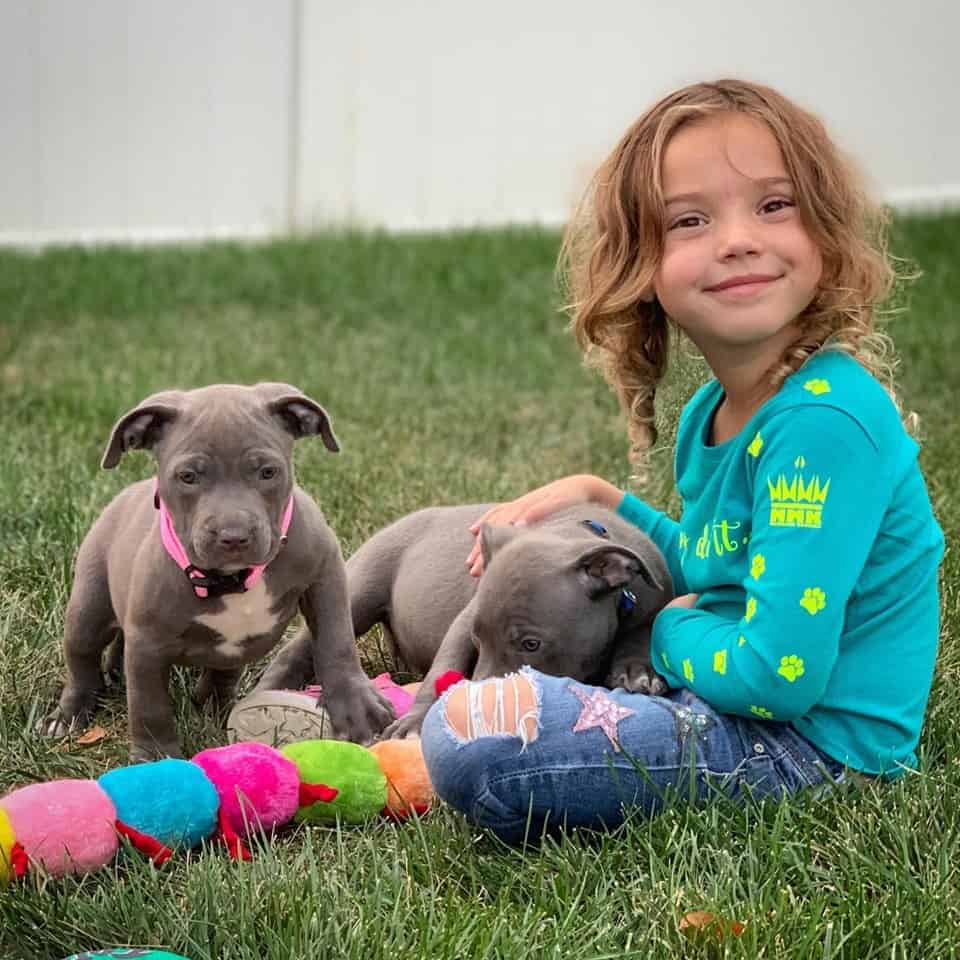How to crate train a puppy in 5 Easy Steps
One of the most searched questions online is ‘How to crate train a puppy?
If you are a first-time parent to a bashful puppy pitbull, you want to know how to crate train your furry friend. Pitbulls are naturally gentle and affectionate. But it all depends on how well you train them as puppies.
There are several benefits on how to crate train a puppy;
● It keeps your dog focused during training, especially for an XL pitbull puppy.
● It provides your puppy with a safe place to rest
● You keep your property safe while you are away.
● Keep your dog in a controlled area when working or entertaining guests.
So there is everything to gain when you know how to crate train a puppy. How you go about it is what determines if you have a positive outcome.
Fortunately, we got your back. Here is how you crate train a pitbull puppy and make them love their new haven.
How to crate train your puppy step by step
1) Introduce your puppy to the crate
Not all dogs will enjoy the idea of being in a crate. Yet, you can train any dog to love their crate by using one simple trick. Making them associate the crate as a happy place.
Bring the crate close to your dog and let them explore it. Your puppy will sniff and go around the crate exploring it. Leave the crate doors open and watch how your puppy reacts. Some puppy will want to explore the inside of the crate as well.
Leave the crate door open and go about your day. Reward your dog with a treat for every time they go into the crate willingly. Slowly they begin to see the crate as a happy place and not a metallic prison.
2) Reward your dog
When your puppy willingly goes into the crate, reward them with a tasty treat. Now you got them excited because they know they did something right. Now start putting treats inside the crate and let your dog get them. By doing this, you are teaching your dog that a crate is a happy place.
Another fun way to make your dog love the crate is by doing all his favorite things in the crate. Allow them to play with their favorite chew toy inside the crate. For toys that can easily damage, supervise your dog as they play with them.
3) Start closing the crate doors slowly
Here you want to ensure your puppy remains calm in the crate even with the door closed. Swing the door slowly and let it go. Take some time before swinging the door another inch forward. Do this gradually until you can close the crate door.
Ensure you are rewarding your pooch with a reward each time you bring the crate door closer. This assures them that it is no big deal when the space they are in is feeling smaller. Never shut the door immediately once your puppy is inside. This can spook your puppy and make them hate the crate for good.
4) Remaining present while your puppy is in the crate
When you successfully close the crate door, do not leave immediately. Stick around and spend time with your puppy. You could be playing with him or doing some chores while they watch you. The puppy will feel safe inside the crate, feeding or with their favorite toy, as you go about your day.
5) Start moving away slowly
Start practicing being away from your dog while they are inside the crate. Never leave your puppy in a crate for a long time. They can develop pet anxiety and become destructive. For puppies, 2 to 4 hours inside a crate is enough for them.
Start by staying away for thirty minutes without your dog noticing. When you get back and they did not create a fuss, reward them with a treat. Next time, stay away for an hour, then two hours, and eventually for 3 hours.
Always remember to reward your puppy with kind words and tasty treats when you are back. This assures them that they are safe inside the crate and you will always reward them if they behave themselves.
Dos and Don’ts on how to crate train a puppy
Puppy crate training can be daunting especially for first-time pet parents. So we have made everything easy for you in easy to follow bullet points.
Dos
● Be patient. How to crate train a puppy does not happen in a day. It can take a full day or even months before your puppy learns how to use a crate. Some dogs will go for a year before they accept the crate.
● Reward and affirmation. Always use dog treats and kind words to crate train a puppy. The idea is to make the crate a happy place and not a dungeon.
● Feed and relieve them. A puppy that is hungry or needs to go real bad will be restless inside a crate. Always take your puppy for potty breaks before letting them get into the crate. Also, ensure they have eaten or have their food while inside the crate.
● Exercise your pitbull puppy. Pitbulls are high energy dogs and need constant exercising. Ensure your puppy goes into the crate when they are tired and happy from play. They will be in a deep snooze and won’t notice your absence till you are back.
● Leave enough toys in the cage. Chew toys are great for keeping a puppy busy. It helps kill boredom and prevent them from causing a racket because they feel lonely.
● Get the right crate. The best puppy crate ensures your puppy is comfortable when standing, turning, or sleeping. As a rule of thumb, get an oversized crate that accommodates your pitbull puppy’s body as they grow.
Dont’s
● Never shove or shout at your pitbull puppy to get inside a crate. Some canines like a Pug can easily have their ego bruised. Dogs like a puppy pitbull may develop aggressive behavior in retaliation.
● Don’t give up. No matter how frustrating it gets when crate training a puppy, do not give up on him. Some puppies like to take their time when learning new stuff. Claustrophobia in pets is another thing you need to be aware of. Be patient with your pup, he will come around.
Conclusion
How to crate train a puppy does not have to feel daunting. Follow the above steps, with lots of love and patience, and your puppy will love his new crate in no time. What other ways do you reward your pitbull puppy for behaving himself? Maybe you can offer them some Bullyade; Vitamins for dogs

